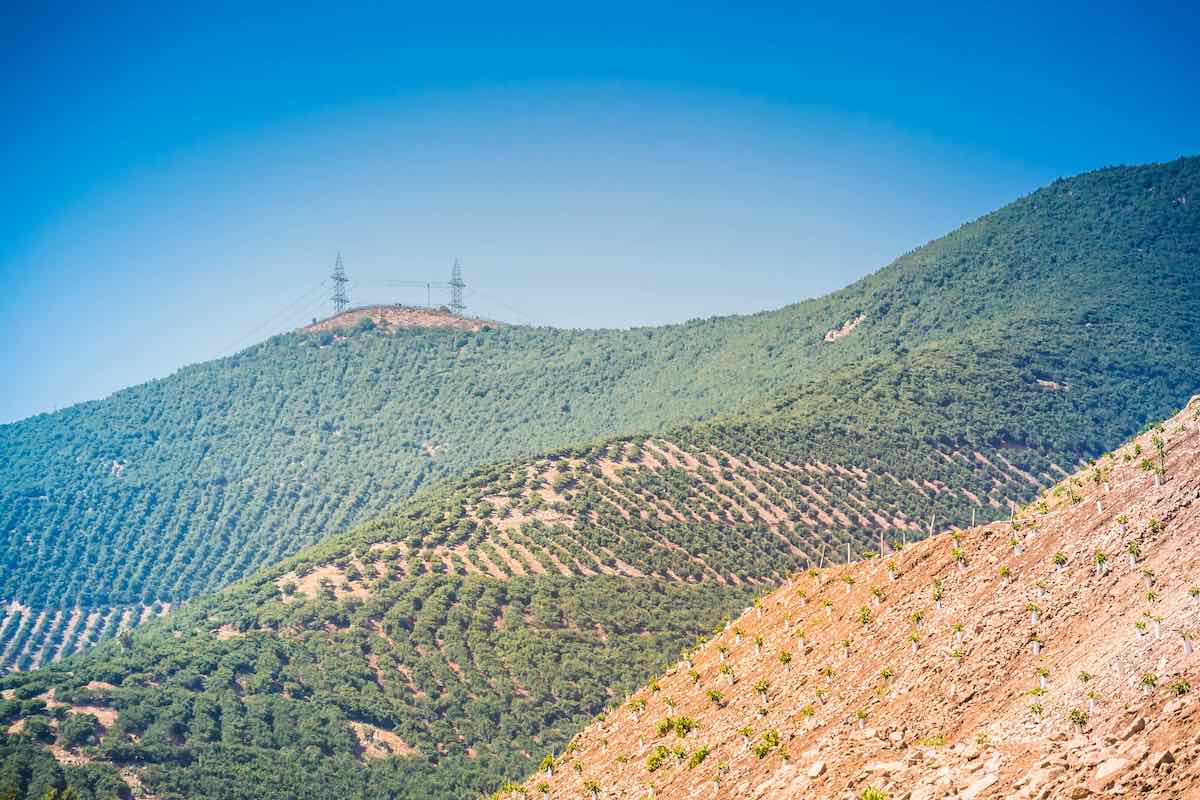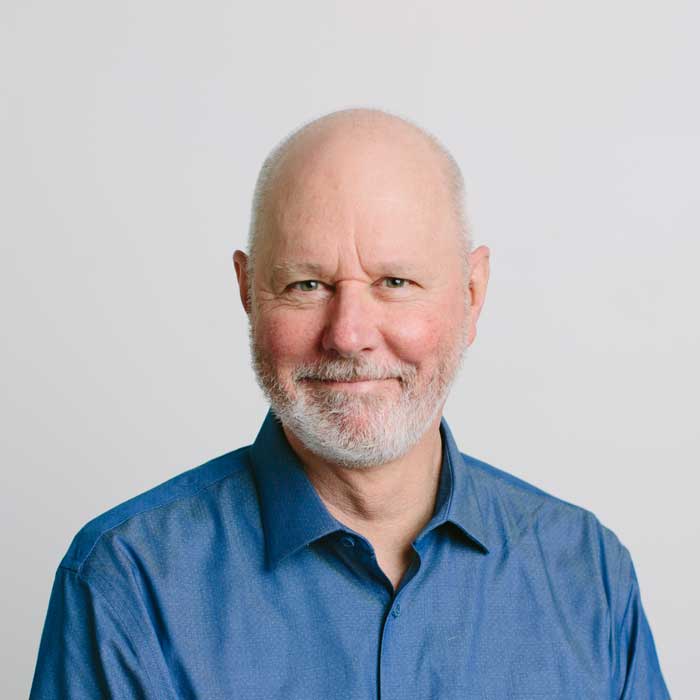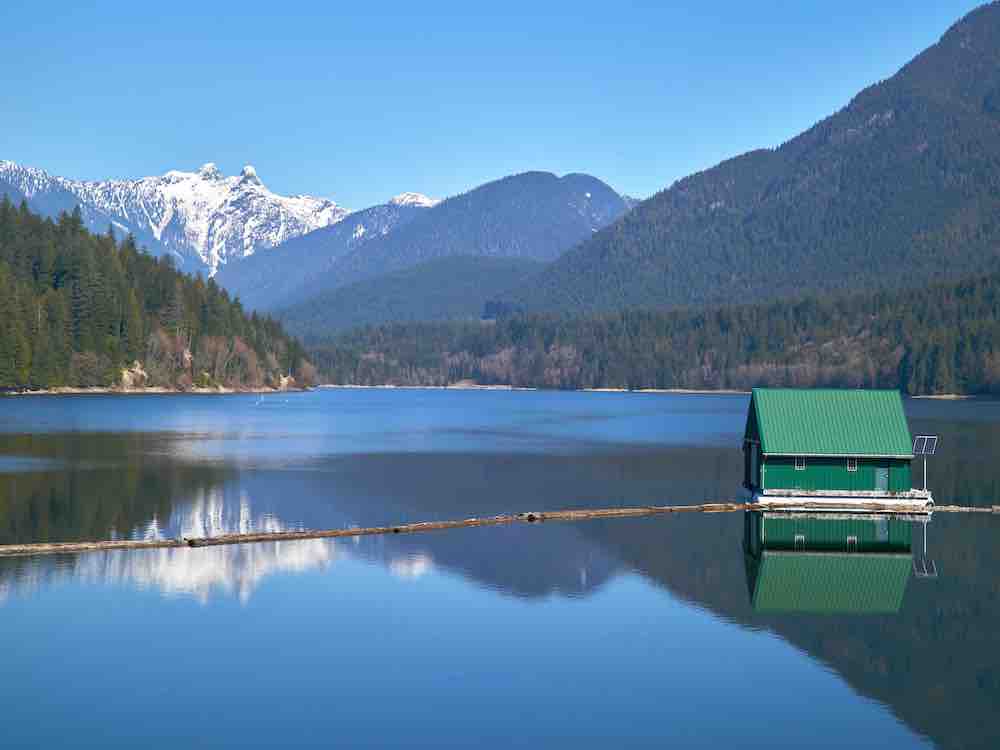- The Last Drop: Solving the World’s Water Crisis
- Picador (2023)
Mexico City, with a population of 22.5 million, may run out of water as early as June 26, and stay that way until September.
When a major city’s water system goes dry, it’s called “Day Zero.” “Mexico in general, and Mexico City in particular, have long flirted with Day Zero,” writes environmental journalist Tim Smedley in The Last Drop.
His book deserves extended attention, because our growing demands for water could outstrip even the resources of the B.C. coast.
Cape Town in South Africa faced a Day Zero a few years ago, as did Chennai in India and São Paulo in Brazil. According to the World Resources Institute, 33 countries will face extremely high water stress by 2040. High-stress countries like Mexico, Spain and Turkey consume 40 to 80 per cent of their available water each year; countries like South Africa, Saudi Arabia and India consume over 80 per cent of their water, making them extremely highly stressed.
Vancouver seems unlikely to share their misery, but we may indirectly suffer some spectacular water shortages unless we prepare now.
Smedley goes into almost encyclopedic detail in The Last Drop. Half the book describes, in horrifying detail, the effects of water stress in countries all over the world; he interviews people feeling that stress. The second half deals with innovative and imaginative ways to reduce that stress. Smedley is optimistic, but also realistic, about the difficulties we face.
The 416-page volume is the product of years of research during which Smedley travelled the world and witnessed the consequences of climate change and ever-growing demand.
In 2021 he visited the Karameh Dam in Jordan, which had been built after a government minister’s son had a dream that a dam should be built there. But the soil beneath the reservoir was so salty that it made the reservoir water unusable. Even a desalination plant couldn’t handle water saltier than the Dead Sea.
From reservoir to ‘dead pool’
On the other side of the world in the United States, Smedley saw how Lake Mead, the great reservoir behind the Hoover Dam, has fallen by 43 metres in 20 years, leaving a “bathtub ring” of calcium carbonate on red sandstone. Lake Mead is now about 305 metres deep; when it reaches 273 metres, it will become a “dead pool,” probably by 2029. “After which,” Smedley says, “the hydroelectricity turbines will no longer turn, and the Colorado River will no longer flow beyond the Hoover Dam into Arizona.... If and when that happens, 40 million people... lose their 90-year source of water supply.”
An Earth satellite called GRACE, for Gravity Recovery and Climate Experiment, has given us a very good idea of our problem: it can measure the gravitational pull caused by underground water, and the loss of that water. Smedley cites a 2015 paper using GRACE data: “It found that, of the world’s 37 largest aquifers, 21 were receding faster than they were being naturally replenished.”
That was due to human overuse and the impact of climate change on the water cycle, moving water around. Saskatchewan, for example, is getting wetter, which is good for agriculture, but the water cycle is swinging more unpredictably between drought and flood. Warmer air holds more water, so the prairie climate begins to resemble the lyrics of an Ian Tyson song, “clear blue skies and 18 inches of rain.”
A recurring theme in The Last Drop is the futility of dams. In Iran, for example, reservoirs lose two billion cubic metres of water a month.
“From the early 20th century onwards,” Smedley writes, “the world’s approach to water management has largely relied on one material: concrete. We have concreted over our flood plains, dammed our rivers and canalized our streams. What we gained in engineering efficiency, we lost in long-term sustainability.”
Smedley cites studies that estimate 40 million to 80 million people have been displaced by dams, and 20 per cent of freshwater fish species have gone extinct. Sedimentation in reservoirs means we may lose 25 per cent of our existing fresh water storage by 2050.
Smedley also quotes biologist John Waldman, who said dams are “Blood clots in our watersheds.” China’s enormous Three Gorges Dam is presently the biggest power station in the world, but Smedley says it couldn’t prevent the serious floods in the summer of 2020.
He goes on to say: “If the $24 billion Three Gorges Dam, described as ‘China’s largest single flood-mitigation project,’ can’t mitigate floods, then what are dams good for? Many do nothing. According to the National Inventory of Dams, only seven per cent of U.S. hydroelectric dams still produce any power. Brian Richter, the river scientist and conservationist, put it neatly on Twitter: ‘Building a new dam because you don’t have enough water is like opening a bank account because you don’t have enough money.’”
Overuse of groundwater is at least as bad. Pumping water out of underground aquifers means Mexico City is sinking at a rate of 28 centimetres a year. Beijing and 45 other Chinese cities are also sinking, making them more vulnerable to flooding and threatening buildings, roads and railways as the ground beneath them subsides.
Much groundwater doesn’t even reach consumers; instead, it leaks out of poorly maintained pipe networks. This may help replenish the local aquifers, but in many cases the aquifer, once pumped dry, is too compressed to absorb more water. Smedley writes that between 1900 and 2008, the United States alone pumped out a billion cubic metres of groundwater.
“Many parts of the world are seeing similar rapid groundwater decline,” Smedley says. “More than two billion people and 40 per cent of global agricultural production rely on unsustainable levels of groundwater extraction.”
Aggravating the water decline is simple pollution: lead pipes in Flint, Michigan, arsenic in Bangladesh, raw sewage everywhere. Smedley devotes a whole chapter to the grim state of England’s rivers, into which the privately owned water trusts routinely dump untreated human waste.
Smedley writes: “According to the FAO (Food and Agriculture Organization of the UN), of the 3,928 km3 of fresh water withdrawn globally every year... it is estimated that over half (2,212 km3) is released back into the environment as urban wastewater, industrial wastewater — including power-station cooling water — or agricultural waste.”
‘Forever chemicals,’ microplastics — and avocados
Agricultural waste includes fertilizers like nitrogen and phosphorus, plus the manure from over 24 billion livestock animals around the world. Industrial waste includes microplastics, which are literally everywhere in the world including our own bodies, and per- and polyfluoroalkyl substances, or PFAS — the “forever chemicals” that are now in drinking water everywhere.
Perhaps the most disturbing chapter in a disturbing book is the one describing how much water we use to feed ourselves. Centre-pivot irrigation puts green circles in arid regions all over the planet. In California and Arizona, it’s dedicated largely to growing alfalfa for livestock — but not necessarily American livestock. People in Saudi Arabia used centre-pivot to grow alfalfa at home, until they ran out of water. Now they own land in California and Arizona, where they grow alfalfa that they export to feed their livestock in Saudi Arabia.
Meanwhile, the Metropolitan Water District of Southern California has bought up vast tracts of farmland and pays farmers to grow nothing until 2040, so water in the Colorado River will stay in the river to supply cities like Los Angeles and San Diego. Who will grow food after 2040, with what water, and with what people, is unclear.
Already, global markets are putting immense strain on the water needed for food production.
On Chilean avocados, Smedley writes:
Avocados grown in the Petorca region require some 1,200 to 2,000 litres of irrigation to produce one kilogram of fruit. This gives each avocado an individual water footprint of around 273 L each. Throwing away that half an avocado turning brown in your fridge, therefore, wastes 136 L of water. A Petorca villager, meanwhile, is given an allowance of only 50 L of water a day, transported in by truck, to cover all their needs.

80 litres to grow one orange
Even during Cape Town’s brush with Day Zero, Smedley tells us, the local wine industry exported over 400 million litres of wine to Europe and the United States. “It takes approximately 1,000 L of water, fed to the vines, to make just 1 L of wine. On top of that, the Western Cape exported an estimated 231,000 tons of citrus fruit, mostly oranges, in 2017. The water footprint of just one orange — the net amount of water used to grow it — averages 80 L.”
Many water footprints are even bigger: it takes 2,500 litres of water to produce one kilogram of rice, and 25,000 litres to produce one kilogram of beef.
Smedley estimates that a glass of milk, two black coffees, an orange juice, a black tea and a glass of wine have a total water footprint of 900 litres. That’s just for one person’s beverages for one day.
So far, many water-starved countries have discovered they can use the “embedded water” in imported food to conceal their domestic water shortages. We now take it for granted that we can have almost any food in any season, so we consume other countries’ water when we buy grapes in January.
“The average U.K. citizen directly uses about 153 L of tap water,” Smedley notes. “Their indirect consumption of embedded water through imported products is around 4,645 L a day.”
Having presented a thoroughly bleak picture of the way we waste and poison water, Smedley then looks at ways to clean and preserve it.
The promise of ‘no-till’ farming
Smedley starts with the land, arguing that “no-till” regenerative farming is far superior to plowing; instead, the farmer uses a device that slices the soil and spits a seed into the slice, which then closes. “The process is this: grow a cover crop over winter, then flatten it with a crimper (like a light steamroller), then direct-drill your seeds straight in. Harvest in summer or autumn, rinse and repeat. The soils, nitrogen and organic matter just build and build.”
So does the water, which drains into a subsoil network of roots, worms and fungi that use the water as it recharges the local aquifer — which Smedley sees as a priority.
Regenerative farming needs less or no irrigation, no pesticides and very little fertilizer. “Underground fungi,” Smedley writes, “have been found to supply 80 per cent of a crop’s nitrogen requirements and up to 100 per cent of its phosphorus requirements, and to provide water to crops in times of drought.”
He quotes Sandra Postel, winner of the 2021 Stockholm Water Prize: “Soils hold eight times as much water as all the world’s rivers combined, but we rarely manage that soil reservoir as a water reservoir. So, if we can improve soil health, we’re getting multiple benefits, better yields, less chemical fertilizer, more carbon in the soil and the ability to hold more water.”
Also critical is managed aquifer recharge, or MAR, a process widely used in Europe (though not so much in England). Cities like Berlin and Amsterdam put treated wastewater into infiltration ponds, from which it sinks into aquifers and can be pumped out again, clean and usable.
“To solve the world’s water crisis,” Smedley writes, “everywhere that can do MAR, should do MAR. According to the UN World Water Development Report 2022, MAR application has increased by a factor of 10 over the last 60 years, ‘but there is still ample scope for further expansion, from the current 10 km3/year to probably around 100 km3/year.’”
Next stop: sponge city
Similarly, some countries are developing “sustainable urban drainage systems,” or SuDS, which allow water to get past cities’ concrete and asphalt and down into their aquifers.
“Cover a city with SuDS,” Smedley writes, “and it becomes a ‘sponge city,’ an initiative begun in China in response to its increasingly devastating floods and droughts. President Xi Jinping declared that cities should ‘act like sponges,’ and that the government would allocate CNY 20.7 billion ($3 billion) to 16 pilot cities between 2015 and 2017. The goal was to change the pattern of lurching between natural disasters by instead soaking up heavy rain and releasing it slowly into aquifers, rivers and reservoirs.”
The goal is to enable 30 Chinese sponge cities to retain 70 to 90 per cent of their stormwater by 2030, and so far it’s working — at less cost than upgrading their old drainage systems. Other cities, from Chennai to Seattle, are doing something similar.
Smedley also discusses high-tech solutions, like solar thermal panels that can pull two to four litres a day of water even out of the hot, dry air of Arizona. A field of 250 panels could produce a cubic metre a day of water so pure it would have to be mineralized to be drinkable; in humid climates, such panel farms could triple that amount.
Another tech effort is to use desiccants to absorb water from air with just five per cent humidity. Meanwhile, water-short Singapore has developed “NEWater,” domestic sewage converted into drinking water. It’s done by a combination of microfiltration, reverse osmosis and ultraviolet disinfection, producing water that’s free of contaminants from estrogen to microplastics.
Desalination, widely adopted in the Middle East, seems much less attractive: for every litre of drinkable water, it produces a litre and a half of super-salty brine that’s usually pumped right back into the ocean despite its environmental effects.
As a result, says Smedley, “a multinational collaboration in 2021, including academics from Saudi Arabia, describes the Persian Gulf as having become ‘more like a salty lake than a typical sea.’ With several of the world’s largest desalination plants discharging into it, the Persian Gulf is now ‘25 per cent saltier than average seawater.’” Meanwhile, emissions from fossil-fuelled desalination add to the climate heating that makes water so scarce.
The petrostates of the Persian Gulf have been experimenting with cloud seeding, and other countries think of drilling into freshwater aquifers under the seabed. Neither is really practicable: seeding, when it works at all, draws rainfall away from other regions; offshore wells would produce water contaminated with heavy metals and could not be replenished when they were pumped out.
Many of Smedley’s water-retrieval methods are eminently doable, but plenty of countries are still in love with desalination even if it makes emissions worse and poisons the sea.
Water is political
Clean water is a prerequisite of public health, but approaches to achieving it seem as haphazard as the responses to COVID-19. As with the pandemic, water is an intensely political issue that will follow the science only when the politically powerful find it in their interests to do so. We can therefore expect to see Day Zero arrive for many cities and regions, while others thrive atop full aquifers.
We in southwestern British Columbia are used to abundant water, with few restrictions on our consumption apart from watering our lawns. According to the Metro Vancouver Water Consumption Statistics Report, in 2021 those of us in Metro Vancouver each consumed about 215 litres per day — a sharp drop from the 450 litres consumed in 1967, though population growth has likely caused higher total consumption.
But what if we add our “embedded” water consumption? That would include imported food, which means we are also drinking the scarce water of avocado farmers in Peru or Mexico, of almond growers in California, and perhaps water from the Amazon now supporting Brazilian beef. It includes the 2,574 litres of water needed on average to produce a Tesla.
If we add our use of computer data centres hosting artificial intelligence applications, we are extending our water footprint enormously: Google’s data centres alone use almost 20 billion litres a year simply to cool their computers.
Bitcoin mining, streaming video and shopping on Amazon all require electricity, and the International Energy Agency estimates that “data centres, cryptocurrencies, and artificial intelligence (AI) consumed about 460 TWh [trillion watt hours] of electricity worldwide in 2022, almost two per cent of total global electricity demand.”
The IEA expects demand for electricity to nearly double the 2022 number by 2026. That’s “roughly equivalent to adding at least one Sweden or at most one Germany.” Demand for water will rise accordingly.
We tend to think of water as free, a human right, until it starts running out. Then we realize it always has a cost that should be built into everything that requires it, so we won’t squander it.
Smedley suggests a sliding scale: your first 100 litres daily would be cheap, but the price for more would rise sharply — to $75,000 to fill a swimming pool, for example.
It may be that AI will think of clever ways to reduce our need for so much electricity and water, and thereby pay for itself. But in the meantime, we will go on pumping out aquifers until our cities sink, dumping super-salty brine out of desalination plants and consuming foods that get more water than the people who grow them. Mexico City will hit its Day Zero eventually if not on June 26, and so will hundreds of other cities around the planet.
As for Vancouver’s Day Zero, it may arrive when our AIs tell us that henceforth they, like Peruvian avocados, will have priority for water, and we, like Peruvian farmers, will have to get by on 50 litres a day. ![]()
Read more: Books, Environment

















Tyee Commenting Guidelines
Comments that violate guidelines risk being deleted, and violations may result in a temporary or permanent user ban. Maintain the spirit of good conversation to stay in the discussion and be patient with moderators. Comments are reviewed regularly but not in real time.
Do:
Do not: